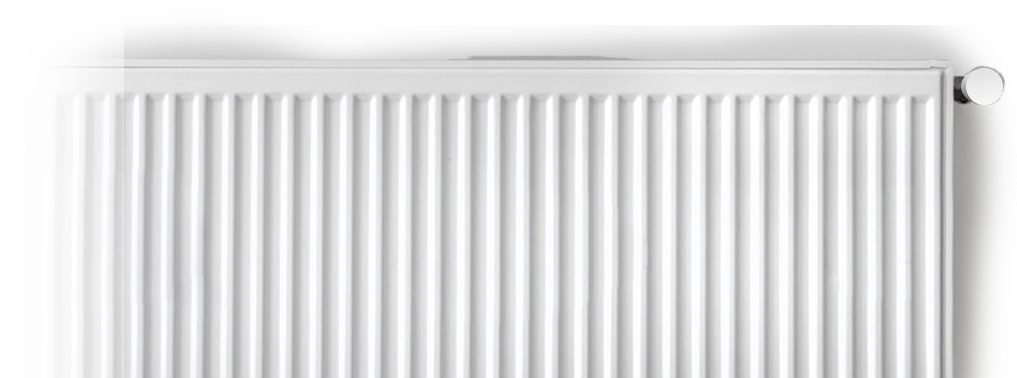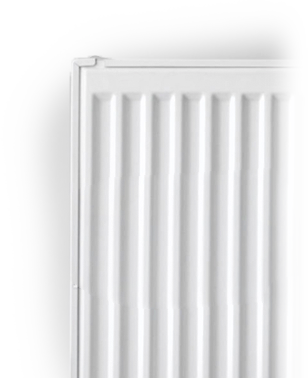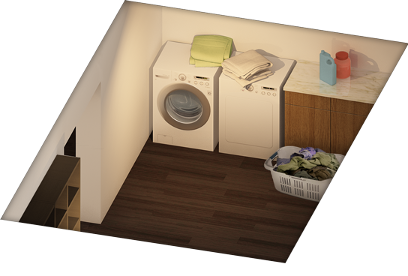Home, smart Home
What you can do at home to combat climate change – and how smart homes also make it very easy for you to conserve water.
Your annual CO₂ footprint is 11.2 tons *According to the Umweltbundesamt, the average CO₂ footprint of a German citizen is about 11.2 tons.
2.0 tons of CO₂ emissions are produced just by
heating your home. Would you move to smaller
apartment for the climate?
By switching off unused electrical appliances and using
power-saving devices, you can reduce some of the 0.7 tons
of CO₂ emissions that are caused by electricity consumption.
2.1 tons of CO₂ are caused by traffic. Switching to cycling,
using public transport or at least sharing your car with
coworkers in your daily commute can save a lot here!
Eating regionally produced food that's currently in season
can save up to 1.7 tons of CO₂.
An staggering 3.8 tons of CO₂ are produced by other kinds
of personal consumption. Think twice the next time you're
about to buy something you might not really need!
The state produces a further 0.9 tons of CO₂ in
your name for operating the public infrastructure
such as roads, museums etc.
- According to the Federal Environment Agency, German citizens release an unbelievable average of two and a half metric tons of carbon dioxide each into the atmosphere every year simply by heating their homes. What can we do to create climate-neutral homes by 2050? Freezing to help the climate isn’t really an option. But would you be willing, for example, to reduce the average temperature of your home by one degree or to downsize – if it would help the environment? The good news is – according to a Fraunhofer Institute study – you can use far simpler means to reduce these emissions by as much as just under a third. This article tells you how.


2.0 tons of CO₂ are emitted by every year by a German citizen on average simply by heating living spaces
31% can be saved by using smart thermostates in old building according to Fraunhofer institute, or even up to 43% according to IHK Hannover
- If it’s cold when you arrive home, do you turn the heating thermostat to the highest setting? This is a common mistake with serious consequences. The temperature would increase just as quickly if you set the thermostat to number 3. Once the room temperature reaches 20 degrees, the system stops and doesn’t keep on heating unnecessarily. At number 5, however, it attempts to heat to 28 degrees, which causes massive damage to the climate.
Do you leave the heating on in the bathroom all night to ensure it’s nice and warm in the morning? Or do you forget to turn down all the radiators when you go out in the evening or during the day? That means you’re contributing to climate change for hours and wasting money unnecessarily, especially if you live in an old, poorly insulated house or apartment.
Fortunately, the Internet of Things can help. Smart thermostats not only pay for themselves within the first year, but are also incredibly easy to install in any home, rented or owned. Even when you’re out and about, the Magenta SmartHome app helps you control the heating, set time switches and other automated mechanisms, and much more besides. Our tour of a sample smart home shows you just how easy it is.
You can do more for the climate than you think. Even avoiding basic mistakes when operating the heating can help.




-
Ventilate and protect the environment
Why waste energy when you're trying to get some fresh air?
Smarthome from Qivicon automatically switches off the
heating when you open a window. -
Think how practical it would be if you didn't need
light switches any more. Smarthome from Qivicon makes
this possible: Lights are only switched on where there
are people in the room. And they switch off automatically
too. This is convenient and saves electricity and money. -
Consume electricity when it is cheap
Energy is cheaper at night than during the daytime. Qivicon
knows when electricity is particularly cheap and turns on power-
hungry appliances like the washing machine at those times. -
Saving water in your garden
The smart irrigation system in the garden looks at the weather
report to avoid unnecessary water consumption when it's about
to rain anyway.
Tips for saving energy in smart homes
Living in a smart home means you can cut your heating costs, save electricity, and use water sustainably. Even when you’re not at home, you can easily use your cellphone to control the washing machine, oven, and windows or even to water the garden, protecting the climate and saving water into the bargain. Thanks to the Qivicon system platform, Deutsche Telekom has the technology and prerequisites to make linking devices from a wide range of manufacturers via a central app a straightforward process. Smart homes are more comfortable, safer, and geared to a more sustainable lifestyle – regardless of whether you live in a detached house or an urban apartment. Let’s take a tour of a typical smart home!
Detailed information about smart homes (in German)